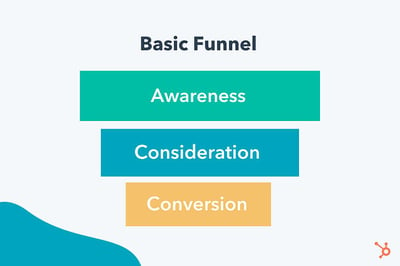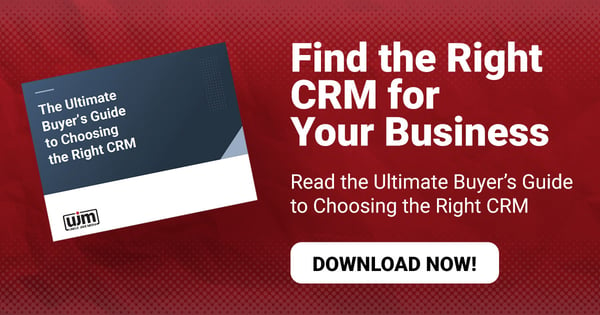
What Should Your Marketing Budget Be? Answer These 7 Questions

You've got a thriving business and you're ready to take it to the next level. It is time to make sure that you are setting aside the right amount for your marketing strategies. When looking at the big picture of your business it can be hard to know where to start and how to best determine how much to budget for marketing efforts.
The good news is that if you have a few data points and some reflection, you can get an idea of where you should focus your marketing budget and how much you should allocate toward that budget. The bad news? It might require a little legwork. But don't worry - we've listed out some great questions to help you out!
To get an idea of how much you should budget for your marketing efforts, start by answering these questions business questions:
1. How many products or services do you offer?
In order to determine how much money you should be spending on marketing, it's important to break down this question into smaller questions. First, how many products do you offer?
Second, how many services do you offer? The distinction between product and service is important because there are different ways of approaching customer acquisition for each one.
There's even more nuance here: some companies sell both products and services but differentiate them in their own minds so that they can focus on one over the other (or treat them as separate businesses).
If you're selling physical goods—like clothes or manufacturing parts—then your customers' decisions will be driven by factors such as price, style, quality, and availability. If your business sells an intangible good—like consulting or accounting services—then it's likely that these decision drivers are less clear-cut. In fact, some customers may not be aware of what exactly goes into making any decision; instead, they'll just say "this feels right" or "I need someone who knows what they're doing."
Now that you have identified your products and services, you can start thinking about the marketing opportunity or priority of each one. If your company goals are to sell more of a certain product in the next 12 months, then consider that when you are creating your budget.
2. What is your profit margin per product or service?
Your profit margin is the difference between your revenue and cost. (It's also known as operating margin or net profit.) For example, if you make $100 and spend $90 to make it, your profit is $10.
If you want to calculate your profit margin:
- Calculate gross revenue. The first step is to add up all of the money that customers paid you over a specific period of time (usually one year). This number can be found on an income statement or tax return.
- Calculate total costs. Next, add up all of the costs associated with running your business during that same period of time (again usually one year). This includes salaries for employees, raw materials used in making products or providing services, equipment maintenance costs like paying for repairs on machines used for production - basically anything related to producing goods or providing services that go into bringing in money from customers but does not result directly in revenue received from sales."
Once you have calculated the average profit margin per product or service, you can start identifying the number of marketing dollars per sale that you can allow for.
3. What is your average annual revenue from sales of products or services?
A more cut-and-dry approach to identifying your marketing budget could be to look at a percentage of your total annual revenue rather than the profit margin per sold product or service.
Based on general business data and best practices, your marketing budget should be between 5 and 7 percent of your annual revenue. However, other factors could impact that percentage, such as the number of current customers, the length of your sales cycle, and your company’s overall marketing goals.
4. How many customers do you have?
Asking yourself this question could help you determine how much more or less you should invest in your current marketing budget. A good rule of thumb is to start with the number of customers you have and then multiply that by the average value they pay per month.
If you want to get really granular, try calculating average customer lifetime value (ACLV). To calculate ACLV, divide the total revenue generated by each customer by the total number of months since their last purchase or conversion.
To make these calculations easier, it's helpful to break down your analysis by product/service or vertical:
- How many customers do I have?
- How many customers do I have per month?
- How many customers do I have per year?
- How many customers do I have per quarter?
The average customer lifetime value could help you reflect on how much benefit lead-generating marketing efforts could provide.
5. How much does it cost to acquire a new customer?
This is a big question. If you're selling something online, there are a lot of costs that go into getting someone to buy from you. Here are some of the things to think about when determining your acquisition cost per customer:
- Advertising costs
- Cost of your marketing team
- Cost of your sales team
- Creative costs
- Technical costs
- Production costs
- Inventory upkeep
- Customer service costs
By looking at both your ACLV calculation and your current customer acquisition cost, you can start to identify how much you can allocate to a marketing budget based on the number of new customers you are striving to create over the next year.
You may want to consider how much of your cost per customer is going to your tech stack. If you have multiple tools that you use to convert users, email leads, and track sales opportunities, it might be worth it to consider a CRM that connects all the tools you need into one software. Not only does it make your marketing and sales data easier to review when reviewing your budget, but it could provide more cost savings and efficiencies.
If you are shopping around your marketing and CRM tool options, utilize our ultimate buyer's guide to see if HubSpot is right for you.
6. How much does it cost to retain an existing customer?
The cost of retaining an existing customer is very similar to acquiring a new customer. In fact, it's often lower. Why? Because the cost of acquiring a new customer includes all the money spent on marketing and sales, whereas the cost of retaining an existing one includes only advertising and public relations expenses.
So how do you know if your retention costs are higher than your acquisition costs? If they are, then you're losing money when it comes to new customers as opposed to keeping your old ones happy! This is important to understand when determining what you will be allocating a marketing budget toward. If customer delight is your top marketing priority, consider how this impacts the overall marketing budget.
7. How many prospects do you have and where are they in your sales funnel?
The more prospects you have, the more opportunities you will have. This is a basic principle of business: if you want more customers, then you will need to market your products or services to more people.
A good way to think about this is a buyer's journey or a sales funnel. Imagine that all of your prospects are at the top of a giant funnel and all of them are going down it into one big pile at its base (that’s where all those sweet sales come from).

As long as there are some people coming in at the top and some going out at the bottom, it’s working well enough—but if fewer people make it through than usual, then there may be something wrong with how much time or money was put into marketing efforts over time.
So what does this mean for your own marketing budget? You should set aside some funds toward building up the part of the marketing or sales funnel that needs the most help. Do you need more awareness to get more prospects to enter your funnel or do you need more content or email nurturing touch-points to help prospects in your funnel consider your services and make the decision to become a customer, like case studies, testimonials, or comparison charts?
Determining what part of the inbound marketing funnel you need to focus on will help you determine what tactics you may have to allocate your marketing budget to. Perhaps start by looking at your website. Does it help you feed qualified leads into your sales funnel? Not sure? Use our Inbound Marketing Website Checklist to see if you should be investing your marketing budget into your website.
Allocating Your Marketing Budget
The answer to the question of how much money you should spend on marketing depends on several factors. First, it’s important to know that there are different types of marketing budgets—there’s a strategic budget and a tactical budget.
The strategic budget outlines your business goals and determines how much money you should be spending over time on various areas of marketing, like social media, inbound marketing, customer delight, marketing tools, etc. Whereas, the tactical budget is used to allocate funds toward specific campaigns and marketing tactics in order to reach those goals.
The second thing you need to consider when determining how much money you should spend on our marketing campaigns is what goals are you trying to achieve and where have you found success. For example:
- If your company is trying to reach more customers through digital channels, and generate more leads through your website, it might make sense for you to invest more heavily in inbound marketing efforts than word-of-mouth advertising or traditional outbound media.
- If your company has a proven history of success with direct response emails, then it may make sense to spend a portion of your marketing budget on email marketing automation tools in order to build efficiency and get higher ROI on your email marketing activity.
With a few data points from these questions and some reflection, you can get an idea of how to establish a marketing budget that focuses on what’s most important to your business.
Get Help Determining your Marketing Budget
As a successful digital marketing agency, we have the experience and additional tools and data to help our clients identify the right digital marketing budget based on their goals and priorities.
Whether it be for CRM Implementation, inbound marketing strategy, web development, or design, we can help you identify how much budget you might need to impact your goals and grow your business. Schedule a free meeting with our team of digital marketing and web development experts. We can help you determine a healthy marketing budget based on your business goals and guide you on how to implement that budget.



